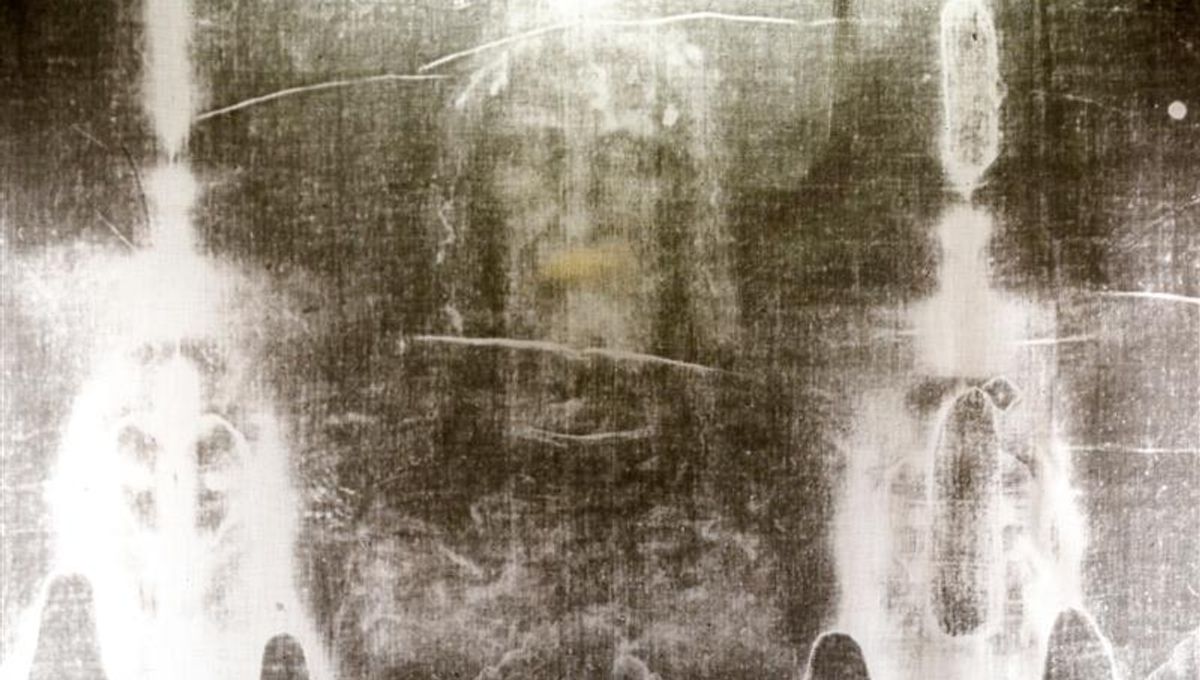
Last week, a study from 2022 sparked a media storm, suggesting that the Shroud of Turin – the controversial linen cloth that some believe was the burial shroud of Jesus Christ – does actually date back to the time of the Christian religious leader. But despite the excitement this has caused, there is reason for caution.
What is the Shroud of Turin?
Anyone who has seen the Shroud of Turin, whether they are a believer or not, will likely be struck by the artifact’s strange appearance. The cloth itself appears to have the impression of a crucified man imprinted upon its surface. This image, along with debates over the authenticity and age of the object, have made it one of the most researched artifacts in history.
As with any supposed relic relating to Jesus, the Shroud’s authenticity has been heavily debated, and not just in recent years.
The Shroud first appeared in the historical record around 1354 when it was presented to the dean of the church in Lirey, France, by Geoffroi de Charny. There is no record of how de Charny came into possession of the supposed relic.
Then, in 1389, the cloth appeared again when it was exhibited at Lirey but was then identified as a fake by the bishop of Troyes, Pierre d’Arcis, who described it as “cunningly painted, the truth being attested by the artist who painted it”.
Despite this early criticism, many generations of Christians and the clergy, even popes, have believed in its authenticity and have made pilgrimages to see it. The Shroud has also been submitted to scientific testing, in an effort to date it and to determine where it was made.
In the 1980s, the Shroud was submitted to radiocarbon dating, along with three control samples, by three separate teams of researchers, each working independently. The results dated the Shroud to sometime between 1260 and 1390 BCE, which means it was obviously created long after Christ was said to have lived.
Not a new study, but an exciting one?
However, a study conducted by Italian scientist Liberato De Caro offered an alternative perspective on the Shroud’s age. The results were published in 2022 but have only now caught media attention for some reason. De Caro and his team from the Institute of Crystallography in Bari, Italy, examined the artifact with a new technique, known as wide-angle X-ray scattering, in a study conducted in 2019.
According to this paper, the Turin Shroud dates back to 2,000 years ago, contemporaneous with when the historical figure of Jesus was said to have lived.
The researchers say cellulose found in the Shroud’s fibres has aged slowly since the 14th century because of the lower ambient temperatures in the rooms where it has been housed. This, they argue, means that most of the Shroud’s aging occurred before the 1300s.
“The degree of natural aging of the cellulose that constitutes the linen of the investigated sample, obtained by X-ray analysis, showed that the [Turin Shroud] fabric is much older than the seven centuries proposed by the 1988 radiocarbon dating”, De Caro and his team write.
However, the authors stress that their results can only be accurate if future research finds evidence that the relic was kept safely at an average room temperature of around 22°C (71.6 °F) with a relative humidity of about 55 percent for 1,300 years before it appeared in the historical record.
Careful with our conclusion
Despite the interesting implications suggested by De Caro’s results, there are some reasons for caution. Firstly, aspects of De Caro’s work and the broader debate over the Shroud’s authenticity have caused controversy in the past. In 2018, a paper co-authored by De Caro and his colleagues was retracted by the journal PLOS One after the quality of the research was brought into question.
The paper had originally argued that a sample of the Shroud contained biological evidence consistent with a human that had suffered severe trauma, the type of violence one would expect from torture and crucifixion (you can see the link they were going for). However, the paper was retracted – not only did the study lack sufficient controls to support their conclusions, but the provenance of the fibers used in the analysis was also questioned.
Significantly, the authors of the study failed to declare that they were provided the sample by the Shroud of Turin Education and Research Association, an organization that supports the belief that the Shroud is the authentic burial cloth of Jesus. As such, the author’s bias could not be discounted.
None of this is to say that the newly-reported-on study has not been conducted properly, but further research and analysis will be needed to verify these results before any real conclusions about its age can be drawn.
Source Link: What's Going On With The Shroud Of Turin?